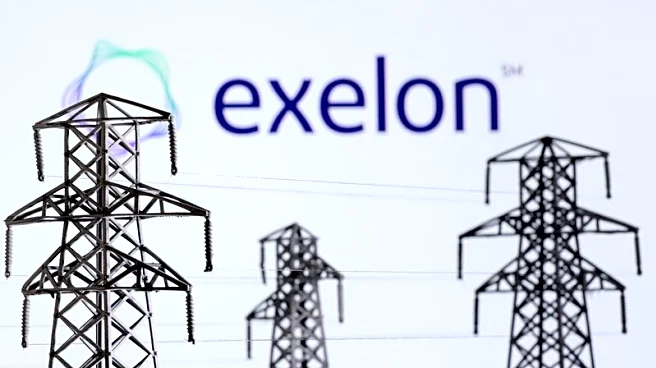What's Happening?
The U.S. Department of Energy (DOE) has issued a letter urging the Federal Energy Regulatory Commission (FERC) to consider an advance notice of proposed rulemaking (ANOPR) on large-load interconnection. This proposal aims to facilitate new large load growth
while maintaining affordability and reliability for the grid. The ANOPR suggests studying hybrid supply and demand facilities, ensuring that load and supply connecting to the grid pay for integration costs, and accelerating interconnection study timelines for flexible loads. However, the DOE's proposed timeline for FERC to take 'final action' by April has raised concerns due to its compressed nature, which traditionally takes at least two years for such rulemakings. The National Association of Regulatory Utility Commissioners has already drafted a resolution urging FERC to reconsider its approach, highlighting jurisdictional issues as DOE steps into areas traditionally under state authority.
Why It's Important?
The DOE's proposal is significant as it seeks to address the growing demand for large load interconnections, particularly from data center developers, while ensuring grid reliability and affordability. If implemented effectively, the ANOPR could unlock benefits such as faster interconnection times and reduced infrastructure costs, potentially lowering rates for consumers. However, the proposal's success hinges on transforming high-level guidance into detailed, implementable rules, which poses challenges given the sensitive jurisdictional issues and the compressed timeline. Utilities and other stakeholders are likely to have concerns, as the proposal could impact state authority over energy regulation.
What's Next?
FERC is expected to navigate the jurisdictional challenges and stakeholder concerns as it works to develop detailed rules from the DOE's high-level proposal. The compressed timeline suggests that FERC must act swiftly to build out the details of the proposal, potentially leading to further discussions and negotiations with state regulators and utilities. The outcome of these efforts will determine whether the ANOPR can deliver on its goals of enabling large load flexibility while maintaining grid reliability and affordability.
Beyond the Headlines
The proposal highlights the ongoing tension between federal and state authority in energy regulation, which could have long-term implications for how large load interconnections are managed in the U.S. The focus on grid flexibility and large load interconnections reflects broader trends in energy policy, as stakeholders seek to balance growing demand with sustainability and reliability concerns.














